201871010101-陈来弟《面向对象程序设计(java)》第七周学习总结
201871010101-陈来弟《面向对象程序设计(java)》第七周学习总结
|
项目 |
内容 |
|
《面向对象程序设计(java)》 |
https://www.cnblogs.com/nwnu-daizh/ |
|
这个作业的要求在哪里 |
https://www.cnblogs.com/nwnu-daizh/p/11654436.html |
|
作业学习目标 |
|
实验内容和步骤
实验1:(20分)
在“System.out.println(...);”语句处按注释要求设计代码替换...,观察代码录入中IDE提示,以验证四种权限修饰符的用法。
程序代码如下:
1 class Parent { 2 private String p1 = "这是Parent的私有属性"; 3 public String p2 = "这是Parent的公有属性"; 4 protected String p3 = "这是Parent受保护的属性"; 5 String p4 = "这是Parent的默认属性"; 6 private void pMethod1() { 7 System.out.println("我是Parent用private修饰符修饰的方法"); 8 } 9 public void pMethod2() { 10 System.out.println("我是Parent用public修饰符修饰的方法"); 11 } 12 protected void pMethod3() { 13 System.out.println("我是Parent用protected修饰符修饰的方法"); 14 } 15 void pMethod4() { 16 System.out.println("我是Parent无修饰符修饰的方法"); 17 } 18 } 19 class Son extends Parent{ 20 private String s1 = "这是Son的私有属性"; 21 public String s2 = "这是Son的公有属性"; 22 protected String s3 = "这是Son受保护的属性"; 23 String s4 = "这是Son的默认属性"; 24 public void sMethod1() { 25 System.out.println("...");//分别尝试显示Parent类的p1、p2、p3、p4值 26 System.out.println("我是Son用public修饰符修饰的方法"); 27 } 28 private void sMethod2() { 29 System.out.println("我是Son用private修饰符修饰的方法"); 30 } 31 protected void sMethod() { 32 System.out.println("我是Son用protected修饰符修饰的方法"); 33 } 34 void sMethod4() { 35 System.out.println("我是Son无修饰符修饰的方法"); 36 } 37 } 38 public class Demo { 39 public static void main(String[] args) { 40 Parent parent = new Parent(); 41 Son son = new Son(); 42 Parent pMethod3= new Son (); 43 44 ((Son) pMethod3).sMethod1(); 45 46 ((Son) pMethod3).pMethod3(); 47 48 ((Son) pMethod3).sMethod4(); 49 50 pMethod3.pMethod2(); 51 52 pMethod3.pMethod3(); 53 54 pMethod3.pMethod4(); 55 56 57 58 System.out.println(pMethod3.p2); 59 60 System.out.println(pMethod3.p3); 61 62 System.out.println(pMethod3.p4); 63 } 64 }
运行结果:
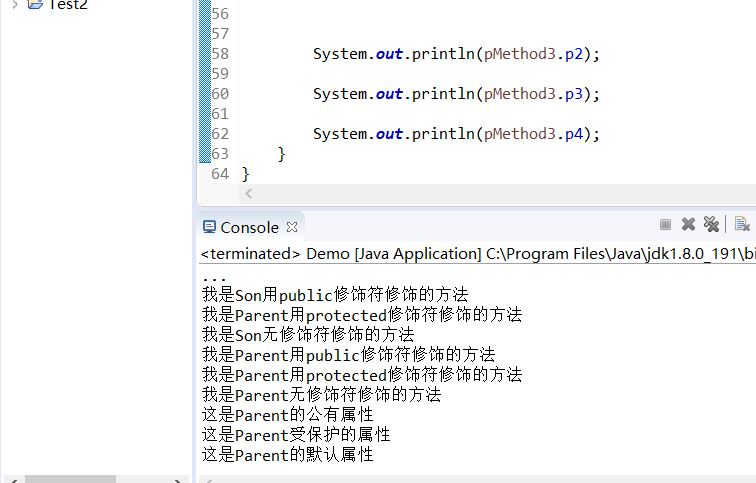
实验2:导入第5章以下示例程序,测试并进行代码注释。
测试程序1:
l 运行教材程序5-8、5-9、5-10,结合程序运行结果理解程序(教材174页-177页);
l 删除程序中Employee类、Manager类中的equals()、hasCode()、toString()方法,背录删除方法,在代码录入中理解类中重写Object父类方法的技术要点。
5-8程序代码如下:
package equals; /** * This program demonstrates the equals method. * @version 1.12 2012-01-26 * @author Cay Horstmann */ public class EqualsTest { public static void main(String[] args) { Employee alice1 = new Employee("Alice Adams", 75000, 1987, 12, 15); Employee alice2 = alice1; Employee alice3 = new Employee("Alice Adams", 75000, 1987, 12, 15); Employee bob = new Employee("Bob Brandson", 50000, 1989, 10, 1); System.out.println("alice1 == alice2: " + (alice1 == alice2)); System.out.println("alice1 == alice3: " + (alice1 == alice3)); System.out.println("alice1.equals(alice3): " + alice1.equals(alice3)); System.out.println("alice1.equals(bob): " + alice1.equals(bob)); System.out.println("bob.toString(): " + bob); Manager carl = new Manager("Carl Cracker", 80000, 1987, 12, 15); Manager boss = new Manager("Carl Cracker", 80000, 1987, 12, 15); boss.setBonus(5000); System.out.println("boss.toString(): " + boss); System.out.println("carl.equals(boss): " + carl.equals(boss)); System.out.println("alice1.hashCode(): " + alice1.hashCode()); System.out.println("alice3.hashCode(): " + alice3.hashCode()); System.out.println("bob.hashCode(): " + bob.hashCode()); System.out.println("carl.hashCode(): " + carl.hashCode()); } }
5-9程序代码如下:
package equals; import java.time.*; import java.util.Objects; public class Employee { private String name; private double salary; private LocalDate hireDay; public Employee(String name, double salary, int year, int month, int day) { this.name = name; this.salary = salary; hireDay = LocalDate.of(year, month, day); } public String getName() { return name; } public double getSalary() { return salary; } public LocalDate getHireDay() { return hireDay; } public void raiseSalary(double byPercent) { double raise = salary * byPercent / 100; salary += raise; } public boolean equals(Object otherObject) { // a quick test to see if the objects are identical if (this == otherObject) return true; // must return false if the explicit parameter is null if (otherObject == null) return false; // if the classes don't match, they can't be equal if (getClass() != otherObject.getClass()) return false; // now we know otherObject is a non-null Employee var other = (Employee) otherObject; // test whether the fields have identical values return Objects.equals(name, other.name) && salary == other.salary && Objects.equals(hireDay, other.hireDay); } public int hashCode() { return Objects.hash(name, salary, hireDay); } public String toString() { return getClass().getName() + "[name=" + name + ",salary=" + salary + ",hireDay=" + hireDay + "]"; } }
5-10程序代码如下:
package equals; public class Manager extends Employee { private double bonus; public Manager(String name, double salary, int year, int month, int day) { super(name, salary, year, month, day); bonus = 0; } public double getSalary() { double baseSalary = super.getSalary(); return baseSalary + bonus; } public void setBonus(double bonus) { this.bonus = bonus; } public boolean equals(Object otherObject) { if (!super.equals(otherObject)) return false; var other = (Manager) otherObject; // super.equals checked that this and other belong to the same class return bonus == other.bonus; } public int hashCode() { return java.util.Objects.hash(super.hashCode(), bonus); } public String toString() { return super.toString() + "[bonus=" + bonus + "]"; } }
三个程序运行结果:
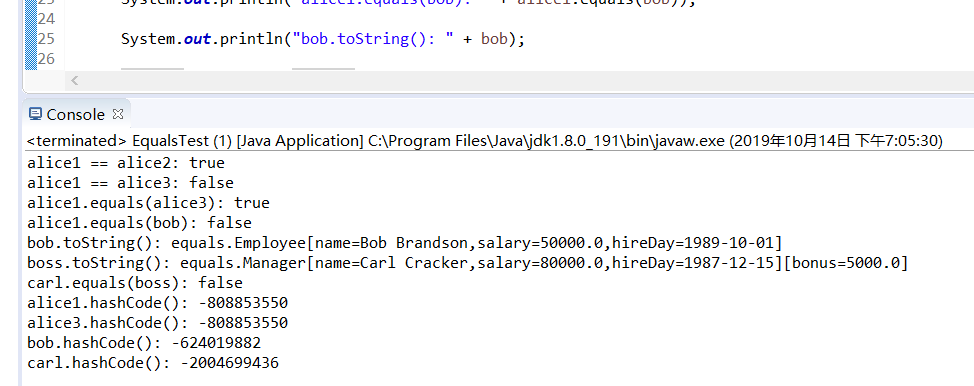
删除程序中Employee类、Manager类中的equals()、hasCode()、toString()方法,背录删除方法,在代码录入中理解类中重写Object父类方法的技术要点。
Manager:
1 public class Manager extends Employee 2 3 { 4 5 private double bonus; 6 7 public Manager(String name, double salary, int year, int month, int day) { 8 9 super(name, salary, year, month, day); 10 11 // TODO Auto-generated constructor stub 12 13 bonus = 0; 14 15 } 16 17 public void setBonus(double bonus) { 18 19 this.bonus = bonus; 20 21 } 22 23 @Override 24 25 public double getSalary() { 26 27 // TODO Auto-generated method stub 28 29 double baseSalary= super.getSalary(); 30 31 return baseSalary+bonus; 32 33 } 34 35 @Override 36 37 public boolean equals(Object otherObject) { 38 39 // TODO Auto-generated method stub 40 41 if(!super.equals(otherObject)) return false; 42 43 Manager other=(Manager)otherObject; 44 45 return bonus==other.bonus; 46 47 } 48 49 @Override 50 51 public int hashCode() { 52 53 // TODO Auto-generated method stub 54 55 return super.hashCode()+17*new Double(bonus).hashCode(); 56 57 } 58 59 @Override 60 61 public String toString() { 62 63 // TODO Auto-generated method stub 64 65 return super.toString()+"[bonus="+bonus+"]"; 66 67 } 68 69 70 71 }
Employee:
import java.time.*; import java.util.Objects; public class Employee { private String name; //实例域定义 private double salary; private LocalDate hireDay; public Employee(String name, double salary, int year, int month, int day)//构造器定义 { this.name = name; this.salary = salary; hireDay = LocalDate.of(year, month, day); } public String getName() { return name; } public double getSalary() { return salary; } public LocalDate getHireDay() { return hireDay; } public void raiseSalary(double byPercent) { double raise=salary*byPercent/100; salary+=raise; } @Override public boolean equals(Object otherObject) { // TODO Auto-generated method stub if(this==otherObject) return true; if(this==null) return false; if(getClass() != otherObject.getClass()) return false; Employee other=(Employee)otherObject; return Objects.equals(name,other.name)&&salary == other.salary&&Objects.equals(hireDay,other.hireDay); } @Override public int hashCode() { // TODO Auto-generated method stub return Objects.hash(name,salary,hireDay); } @Override public String toString() { // TODO Auto-generated method stub return getClass().getName()+"[name="+name+",salary="+salary+",hireday="+hireDay+"]"; } }
运行结果:
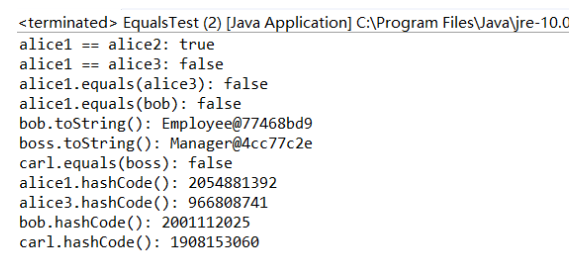
Object类存储在java.lang包中,是所有java类(Object类除外)的终极父类。当然,数组也继承了Object类。然而,接口是不继承Object类的,“Object类不作为接口的父类”。java的任何类都继承了这些函数,并且可以覆盖不被final修饰的函数。例如,没有final修饰的toString()函数可以被覆盖,但是final wait()函数就不行。Java也没有强制声明“继承Object类”。如果这样的话,就不能继承除Object类之外别的类了,因为java不支持多继承。然而,即使不声明出来,也会默认继承了Object类,
测试程序2:
l 在elipse IDE中调试运行程序5-11(教材182页),结合程序运行结果理解程序;
l 掌握ArrayList类的定义及用法;
l 在程序中相关代码处添加新知识的注释;
5-11代码:
1 package arrayList; 2 3 import java.util.*; 4 5 /** 6 * This program demonstrates the ArrayList class. 7 * @version 1.11 2012-01-26 8 * @author Cay Horstmann 9 */ 10 public class ArrayListTest 11 { 12 public static void main(String[] args) 13 { 14 // fill the staff array list with three Employee objects 15 ArrayList<Employee> staff = new ArrayList<Employee>(); 16 17 staff.add(new Employee("Carl Cracker", 75000, 1987, 12, 15)); 18 staff.add(new Employee("Harry Hacker", 50000, 1989, 10, 1)); 19 staff.add(new Employee("Tony Tester", 40000, 1990, 3, 15)); 20 21 // raise everyone's salary by 5% 22 for (Employee e : staff) 23 e.raiseSalary(5); 24 25 // print out information about all Employee objects 26 for (Employee e : staff) 27 System.out.println("name=" + e.getName() + ",salary=" + e.getSalary() + ",hireDay=" 28 + e.getHireDay()); 29 } 30 }
1 package arrayList; 2 3 import java.time.*; 4 5 public class Employee 6 { 7 private String name; 8 private double salary; 9 private LocalDate hireDay; 10 11 public Employee(String name, double salary, int year, int month, int day) 12 { 13 this.name = name; 14 this.salary = salary; 15 hireDay = LocalDate.of(year, month, day); 16 } 17 18 public String getName() 19 { 20 return name; 21 } 22 23 public double getSalary() 24 { 25 return salary; 26 } 27 28 public LocalDate getHireDay() 29 { 30 return hireDay; 31 } 32 33 public void raiseSalary(double byPercent) 34 { 35 double raise = salary * byPercent / 100; 36 salary += raise; 37 } 38 }
运行结果:

l 设计适当的代码,测试ArrayList类的set()、get()、remove()、size()等方法的用法。
1 package arrayList; 2 3 import java.util.*; 4 5 /** 6 7 * This program demonstrates the ArrayList class. 8 9 * @version 1.11 2012-01-26 10 11 * @author Cay Horstmann 12 13 */ 14 15 public class ArrayListTest 16 17 { 18 19 public static void main(String[] args) 20 21 { 22 23 // fill the staff array list with three Employee objects 24 25 ArrayList<Employee> staff = new ArrayList<Employee>(); //声明和构造一个保存Employee对象的数组列表 26 27 staff.add(new Employee("Carl Cracker", 75000, 1987, 12, 15));//使用add方法将元素添加到数组列表中 28 29 staff.add(new Employee("Harry Hacker", 50000, 1989, 10, 1)); 30 31 staff.add(new Employee("Tony Tester", 40000, 1990, 3, 15)); 32 33 staff.remove(1); //从数组列表中删除元素 34 35 int n = staff.size(); 36 37 System.out.println(n); 38 39 System.out.println(staff.get(0)!=staff.get(1)); 40 41 // raise everyone's salary by 5% 42 43 for (Employee e : staff) 44 45 e.raiseSalary(5); 46 47 // print out information about all Employee objects 48 49 for (Employee e : staff) 50 51 System.out.println("name=" + e.getName() + ",salary=" + e.getSalary() + ",hireDay=" 52 53 + e.getHireDay()); 54 55 } 56 57 }
运行结果:

ArrayList是集合的一种实现,实现了接口List,List接口继承了Collection接口。Collection是所有集合类的父类。ArrayList使用非常广泛,不论是数据库表查询,excel导入解析,还是网站数据爬取都需要使用到,了解ArrayList原理及使用方法显得非常重要。
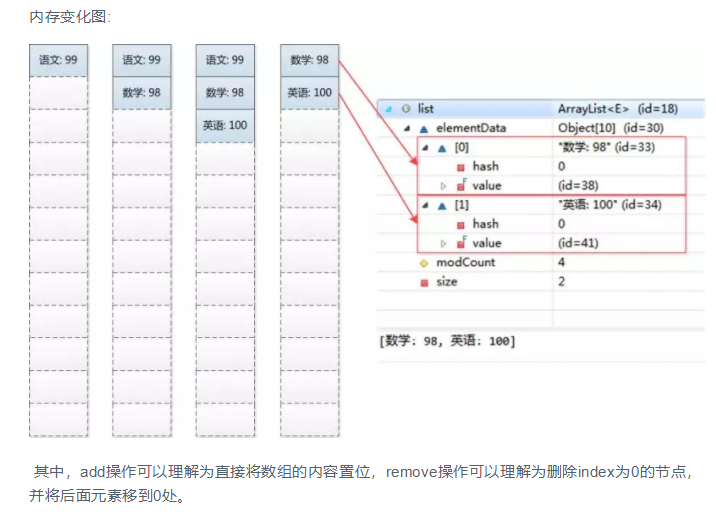
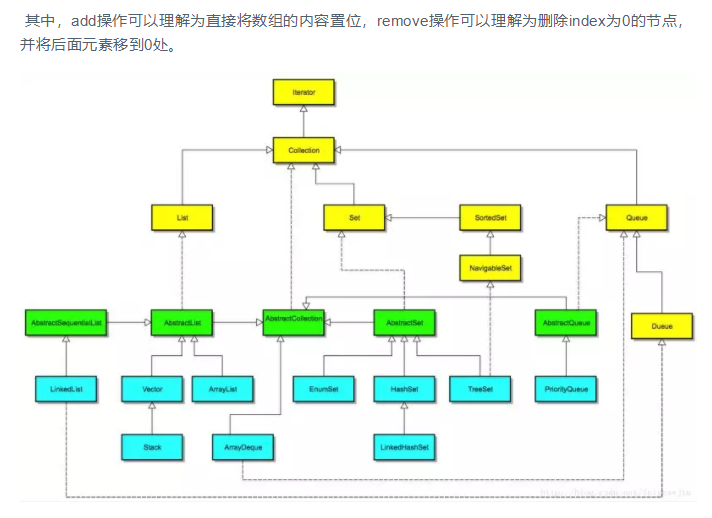
测试程序3:
l 编辑、编译、调试运行程序5-12(教材189页),结合运行结果理解程序;
l 掌握枚举类的定义及用法;
l 在程序中相关代码处添加新知识的注释;
5-12代码:
1 package enums; 2 3 import java.util.*; 4 5 /** 6 * This program demonstrates enumerated types. 7 * @version 1.0 2004-05-24 8 * @author Cay Horstmann 9 */ 10 public class EnumTest 11 { 12 public static void main(String[] args) 13 { 14 Scanner in = new Scanner(System.in);//字符串转换为大写 15 System.out.print("Enter a size: (SMALL, MEDIUM, LARGE, EXTRA_LARGE) "); 16 String input = in.next().toUpperCase(); 17 Size size = Enum.valueOf(Size.class, input);//静态values方法返回枚举的所有值的数组 18 System.out.println("size=" + size); 19 System.out.println("abbreviation=" + size.getAbbreviation()); 20 if (size == Size.EXTRA_LARGE)//判断语句 21 System.out.println("Good job--you paid attention to the _."); 22 } 23 } 24 25 enum Size 26 { 27 SMALL("S"), MEDIUM("M"), LARGE("L"), EXTRA_LARGE("XL"); 28 29 private Size(String abbreviation) { this.abbreviation = abbreviation; } 30 public String getAbbreviation() { return abbreviation; } 31 32 private String abbreviation; 33 }
运行结果:

l 删除程序中Size枚举类,背录删除代码,在代码录入中掌握枚举类的定义要求。
1 package enums; 2 3 import java.util.*; 4 5 /** 6 * This program demonstrates enumerated types. 7 * @version 1.0 2004-05-24 8 * @author Cay Horstmann 9 */ 10 public class EnumTest 11 { 12 public static void main(String[] args) 13 { 14 var in = new Scanner(System.in); 15 System.out.print("Enter a size: (SMALL, MEDIUM, LARGE, EXTRA_LARGE) "); 16 String input = in.next().toUpperCase(); 17 Size size = Enum.valueOf(Size.class, input); 18 System.out.println("size=" + size); 19 System.out.println("abbreviation=" + size.getAbbreviation()); 20 if (size == Size.EXTRA_LARGE) 21 System.out.println("Good job--you paid attention to the _."); 22 } 23 } 24 25 enum Size 26 { 27 SMALL("S"), MEDIUM("M"), LARGE("L"), EXTRA_LARGE("XL"); 28 29 private Size(String abbreviation) { this.abbreviation = abbreviation; } 30 public String getAbbreviation() { return abbreviation; } 31 32 private String abbreviation; 33 }
运行结果:

java.util.EnumSet和java.util.EnumMap是两个枚举集合。EnumSet保证集合中的元素不重复;EnumMap中的key是enum类型,而value则可以是任意类型。
测试程序4:录入以下代码,结合程序运行结果了解方法的可变参数用法
代码如下:
1 package CLD; 2 3 public class TestVarArgus { 4 5 public static void dealArray(int... intArray){ 6 7 for (int i : intArray) 8 9 System.out.print(i +" "); 10 11 12 13 System.out.println(); 14 15 } 16 17 public static void main(String args[]){ 18 19 dealArray(); 20 21 dealArray(1); 22 23 dealArray(1, 2, 3); 24 25 } 26 27 }
运行结果:
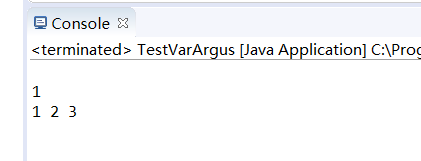
实验:3:编程练习:参照输出样例补全程序,使程序输出结果与输出样例一致。
代码:
1 public class Demo { 2 3 public static void main(String[] args) { 4 5 Son son = new Son(); 6 7 son.method(); 8 9 } 10 11 } 12 13 class Parent { 14 15 Parent() { 16 17 System.out.println("Parent's Constructor without parameter"); 18 19 } 20 21 Parent(boolean b) { 22 23 System.out.println("Parent's Constructor with a boolean parameter"); 24 25 } 26 27 public void method() { 28 29 System.out.println("Parent's method()"); 30 31 } 32 33 } 34 35 class Son extends Parent { 36 37 Son(){ 38 39 super(false); 40 41 System.out.println("Son's Constructor without parameter"); 42 43 System.out.println("Son's method()"); super.method(); 44 45 } 46 47 }
运行结果:

三,实验总结:
这周的 实验大多都是重复上周的实验所以也没有大的难度,让我在前一次实验的基础上对继承有了进一步的了解,但通过测试发现了很多的问题,希望通过后期的学习可以尝试着独自解决这些问题。



